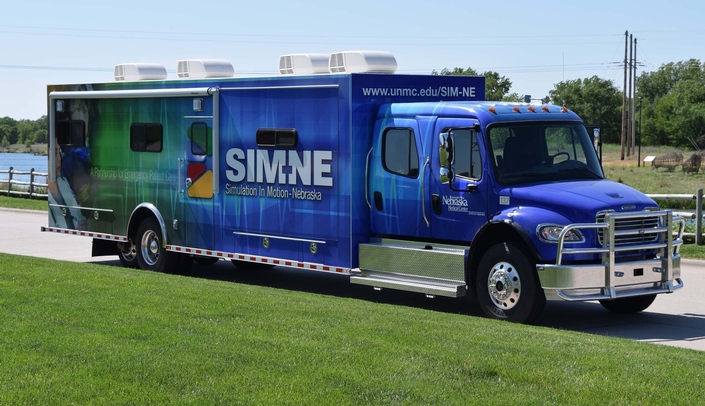By Kristi Jochum, Sutherland, Neb.
I have what I call my paying job. But, for more than 30 years, I’ve also had another career. I’m an emergency medical technician, or EMT, and firefighter. Currently, I’m the rescue chief and treasurer for Sutherland Fire and Rescue in Sutherland, Neb.
Just like so many other fire and rescue squads throughout Nebraska, we’re an all-volunteer unit. In many parts of this state, it’s a small squad of dedicated volunteers that keeps you, your loved ones, and neighbors, safe.
That’s why I’m asking you and our state legislature to support LB 761 to fund the Simulation in Motion-Nebraska (SIM-NE) program, which brings the latest technology and training to the rural providers who answer the toughest calls.
We put a lot of pressure on ourselves to be ready, when those calls come. We may be unpaid volunteers doing this on top of our day jobs. But, the communities we serve, the emergencies we see, demand that we handle ourselves like full-time pros.
SIM-NE, established by the University of Nebraska Medical Center, brings customized trucks with the latest technology, simulation equipment and training techniques from UNMC to rural EMS providers and critical access hospitals – for free.
In Sutherland, Neb., we’re fortunate to have done the training twice.
It’s amazing.
Having the "sims" come right to you in your community, having that real-life training and having an expert give you feedback at the drop of a dime – it’s invaluable.
But, today, after two years of training thousands of Nebraska responders, the funding for the SIM-NE trucks, originally supported by a grant, is about to run out.
That’s why we need LB 761, which would provide a 50-cent motor vehicle license fee to be appropriated to the SIM-NE program, to keep these trucks on the road. We need to keep bringing the best and latest training to emergency providers in all parts of our state.
Before SIM-NE, we did what we could. We sometimes practice with skills nights at the firehouse. A couple years ago, we had the high school drama kids act in a training exercise.
Or, we send people to conferences, which are expensive. Plus motel room.
And a lot of those are mostly lectures.
But, SIM-NE brings lifelike, high-fidelity mannequins that cry, talk, do belly sounds, increase heartrate and drop blood pressure. These mannequins react when we do, so we can tell when we’re right or wrong. Our whole team can practice together, instead of just those that could make a conference.
We can run through scenarios we might see only every couple years.
My colleagues at SIM-NE tell me that since 2017, they have:
- Traveled more than 62,000 miles across Nebraska and trained agencies in 87 of our 93 counties;
- Provided more than 20,000 free continuing education hours, training almost 7,000 individuals.
This makes an incredible difference for small departments, with smaller budgets.
I first joined the rescue squad because the community of Cambridge, Neb., where I was living then, and where I had grown up, was begging for EMTs.
I had little kids at home. I don’t know how many times I was at a school program and my beeper would go off, I’d have to run out for a call. Someone would yell, "Kristi, we got your kids, don’t worry about it!" I didn’t even look back to see who had said it. I knew they would be OK.
That’s what it’s like in a small town.
I could answer the call, because my community was there for me.
Please, state senators: let’s be there for our rural responders, by continuing to give them the best training, through SIM-NE.
